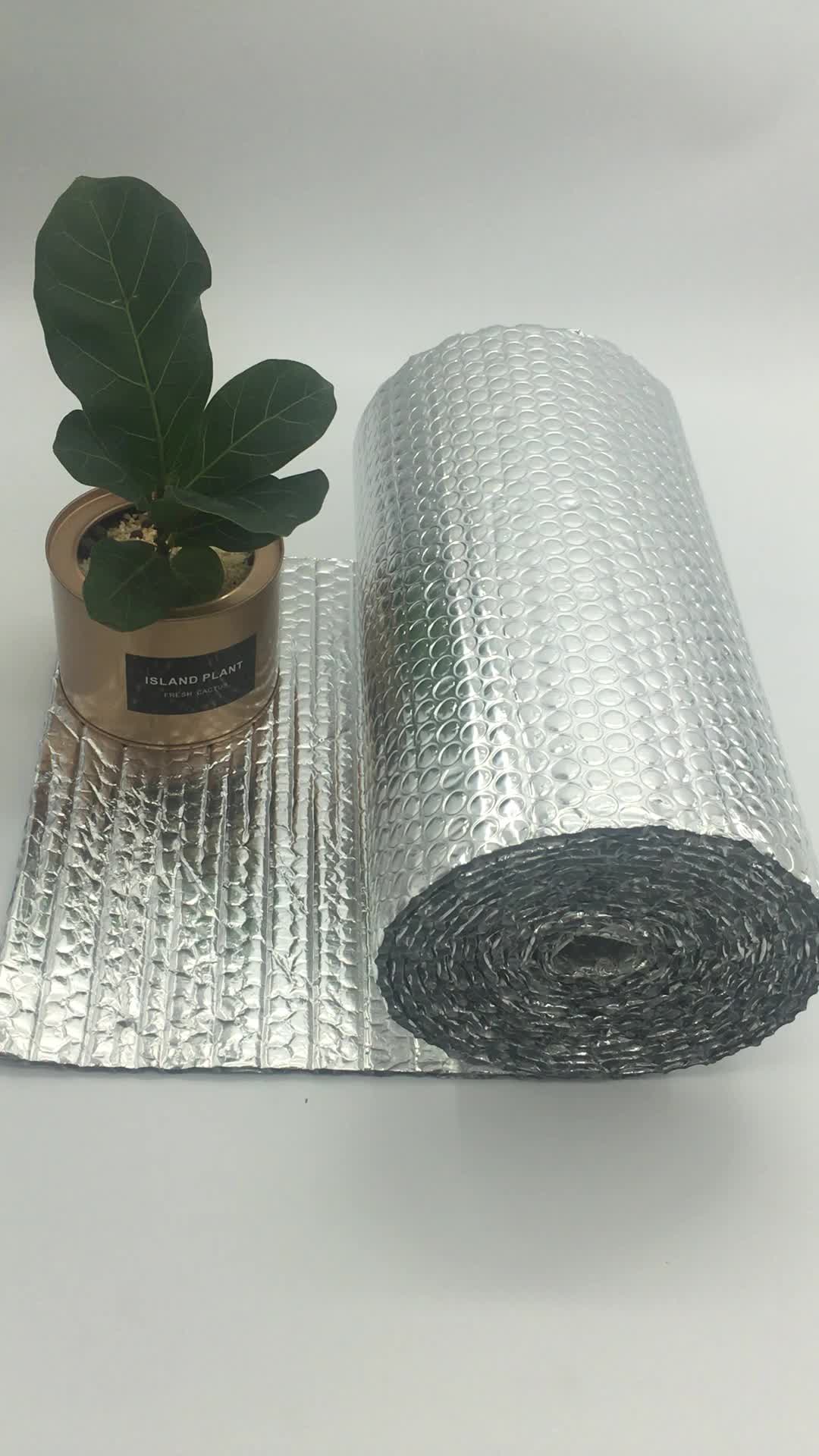How Does Double-Sided Reflective Aluminum Foil Insulation Cut Energy Bills?
Spiking utility rates and hotter summers make every wasted watt of cooling energy painfully obvious on your monthly bill. Double-sided reflective aluminum foil insulation―often called a radiant-barrier foil―attacks the problem at its source: it reflects radiant heat before it ever seeps into your living space. In the next few minutes you’ll see exactly how this low-profile layer turns your attic into an energy-saving ally―and how to install it so the savings show up on your very next statement.

What Makes Double-Sided Foil Different?
-
Two reflective faces, one slim core. Unlike single-sided products, both sides bounce heat, so the barrier works year-round—reflecting the sun’s heat in summer and keeping interior warmth from escaping in winter.
-
Emissivity under 0.05. Low-emissivity aluminum surfaces emit almost no radiant energy, blocking 90-97 % of radiant heat that strikes them.
-
Paper-thin profile. At <10 mm thick (often just 3–6 mm), it slips under rafters or over existing batts without robbing you of storage height.
How It Slashes Your Energy Bills
1. Drops Attic Temperatures Fast
A foil barrier can make an attic 20-30 °F (11-17 °C) cooler on peak-sun days. The AC no longer has to fight a 140 °F attic heat load, so people in warm climates feel the payback first.
2. Makes Existing Insulation Work Harder
Traditional batts and blown-in fibers only slow conductive heat; they can’t stop radiant heat. When the foil barrier reflects that radiant load away, the batts stay cooler and their advertised R-value remains intact—even when attic temperatures soar.
3. Lets Your HVAC Breathe
A cooler attic lowers the temperature of the ductwork snaking overhead. Every degree drop improves air-conditioner efficiency by roughly 1 %. Over a long cooling season that translates into measurable kilowatt-hour savings.
4. Year-Round Payback
In winter the inward-facing foil helps keep household heat from radiating into the attic, trimming furnace runtimes. The dual-side design is why this material is popular in both Phoenix and Toronto.
Real-World Savings: What the Numbers Say
| Source | Climate Studied | Reported Savings |
|---|---|---|
| U.S. Department of Energy | Warm Southern U.S. | 5-10 % reduction in annual cooling costs |
| RIMA International | Lab testing | Blocks 90-97 % radiant heat |
| Angi Market Data (2025) | U.S. installers | $0.50–$0.90 / sq ft for double-sided foil; typical ROI <3 yrs |
Takeaway: Even the conservative DOE range translates into hundreds of dollars a year for a 2 000 ft² home in a hot-summer region.
Installation Best Practices for Maximum ROI
-
Create (or maintain) an air gap. The foil must face an air space to perform; stapling it directly against sheathing kills reflectivity.
-
Face the shiny side toward the heat source. In attics, that’s downward on the roof line; in crawlspaces, it’s upward toward the floor.
-
Seal every edge. Tape seams with foil-backed HVAC tape to keep air and dust from sneaking behind the barrier.
-
Mind ventilation. Radiant barriers work with soffit and ridge vents, not instead of them. Adequate airflow sweeps away any heat the foil rejects.
-
Avoid compression. Laying heavy boxes on horizontal foil squashes air layers and cuts performance.
DIY vs. Pro
-
DIY-friendly: A utility knife, staple gun, and safety glasses are the main tools. One person can finish a two-car-garage attic in a weekend.
-
Hire a pro if: Your attic has complex framing, spray-foam obstructions, or you’re sensitive to confined-space work.
Cost-to-Savings Snapshot
Example: 1 500 sq ft attic × $0.70 / sq ft (material) + $0.80 / sq ft (labor) ≈ $2 250 installed.
Annual cooling savings (DOE mid-range 7.5 %) on a $1 800 cooling bill ≈ $135. Payback ≈ 2.8 years, after which every cooled season is pure profit.
That payback shortens in higher-rate areas or when combined with other envelope upgrades like duct sealing.
Common Mistakes to Avoid
-
Skipping the air gap. Foil touching plywood becomes a heat conductor, not a reflector.
-
Covering intake vents. Airflow is the quiet partner that makes the barrier shine; keep soffits clear.
-
Letting dust build up. In desert climates, a light sweep every few years maintains peak reflectivity.
-
Relying on foil alone in cold zones. Pair it with code-level mass insulation for winter performance.
Conclusion & Next Steps
Double-sided reflective aluminum foil insulation is one of the simplest “install it once, save forever” upgrades a homeowner can make. By bouncing away up to 97 % of radiant heat and trimming AC runtimes 5-10 %, it reliably chips away at energy bills while keeping attics and living spaces noticeably cooler. Ready to see lower numbers on your next utility statement? Grab a roll, clear a weekend—or call a pro—and make your roof work for you, not against you.
What’s your biggest hurdle to installing a radiant barrier? Drop a comment below, share your questions, or tag a neighbor who’s tired of sky-high cooling bills. Let’s spark an energy-saving conversation!

